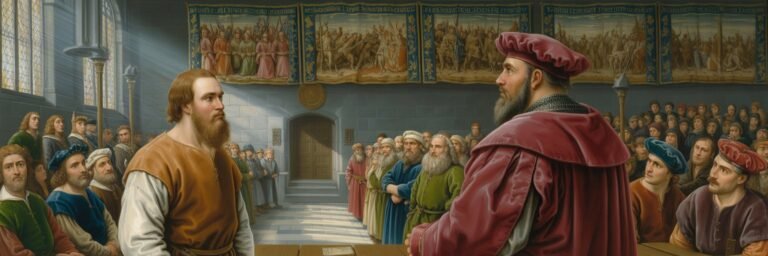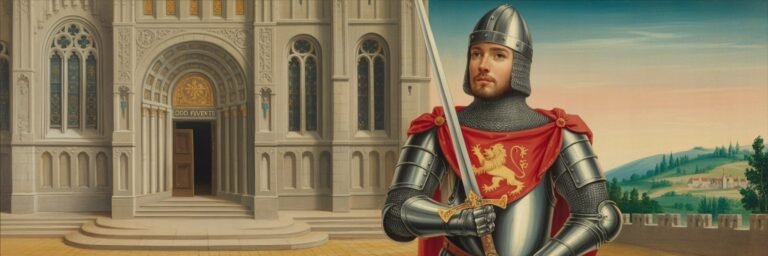INTRODUCTION
The Middle Ages, referred often as the medieval period, was an age of dynamic socio-political changes, religious conflicts and a platform for immense military innovation. Defined by the span from the fall of Rome in the 5th century to the Renaissance in the 14th century, this period beheld countless wars and battles, which shaped the destiny of numerous nations. Some confrontations, however, played significantly more crucial roles than others, forging new powers, determining the fates of empires, and planting seeds of cultural metamorphosis. Key battles of the Middle Ages serve as portals through which we can take a glimpse into the era’s nuanced historical evolution.
HISTORICAL BACKGROUND
The medieval period was a churning cauldron of powerful empires and fledgling nations, each willing to carve out a portion of this changing world for themselves. A salient feature of this period was the nature of warfare, where the feudal system created a distinct class of knights who became the significant war-machines of this era.
The Battle of Tours (732 AD), a pivotal contest between the forces of the Frankish and Burgundian leader Charles Martel and the army of the Umayyad Caliphate, was one of the first major conflicts of the Middle Ages. The victory of the Franks halted the Muslim expansion into Europe, reassuring the stability of Christianity within the territory. Whereas, the Battle of Hastings (1066 AD), a clash between the last Anglo-Saxon king, Harold II, and the Duke of Normandy, William the Conqueror, was instrumental in shaping Britain’s modern identity.
THEORIES AND INTERPRETATIONS
The academic viewpoint focuses not only on the motives and military strategies of these battles, but also on its repercussions, such as the resulting societal and cultural changes. For instance, the Battle of Hastings emphasized the effects of technological advancements like the introduction of crossbows. Additionally, it marked a shift in England’s sociopolitical structure, leading to the establishment of the Feudal System.
On the other hand, the Battle of Tours symbolises a broader spectrum of conflict often viewed through the lens of ‘Clash of Civilizations.’ There are debates among scholars as to whether it was a battle between religions or merely territorial conquest.
MYSTERIES AND CONTROVERSIES
These battles from the lens of posterity often generate various speculations and controversies. For instance, the exact location of the Battle of Tours has always sparked debates among historians. Some argue the battleground was likely between Poitiers and Tours, while others suggest it was further south.
Simultaneously, the aftermath of the Battle of Hastings still has its share of unresolved mysteries. One such debated issue is the fate of King Harold II. While mainstream historical narratives state that he died in the battle, several alternative theories contend he survived and lived in hiding.
SYMBOLISM AND CULTURAL SIGNIFICANCE
Medieval warfare impacted more than just the political landscape; they laid the bricks of cultural evolution as well. The Battle of Hastings, for example, gave way to the Norman Conquest’s cultural transition, which introduced French influences into the predominantly Anglo-Saxon culture, enriching the English language.
Similarly, the Battle of Tours, often seen as a symbol of unyielding resistance, spurred the gradual formation of a distinct European identity, enhancing Christianity’s central role in cultural and social contexts.
MODERN INVESTIGATIONS
Historical curiosities spur modern investigations, using advanced tools and methodologies. Archaeological excavations in and around supposed battle sites, examination of ancient manuscripts, and forensic anthropology are some of the ways historians pursuit the truth behind these historical events.
For instance, in 2016, a team of historians and archaeologists in England launched a project called ‘Breaking Ground: Warfare in Medieval Europe c.1000 – c.1300.’ The project’s objective was to re-invigorate understandings of medieval warfare, with a particular focus on the Battle of Hastings, by combining historical narratives, archaeological evidences and cutting-edge technologies.
LEGACY AND CONCLUSION
The historical battles of the Middle Ages played a critical role in shaping the subsequent course of human history. They were pivotal not only in determining the destinies of states and empires, but also in influencing cultural and social dynamics. These epic conflicts still hold within them countless lessons for contemporary societies, reminders of the human capacity for both creation and destruction.
Exploring these key battles is akin to unearthing time capsules that hold within them the very essence of human history, transporting us back to an age of knights and castles, kings and sagas, enabling us to understand, appreciate and learn from the toils and triumphs of our ancestors. As we walk along with history, we realize these aren’t mere stories of battles, but also of the human yearning for power, survival, and progress, casting shadows that are relevant even in the issues of the modern world. The bells toll from a medieval tower, a resonance that still reverberates in the echo chambers of our current civilizations.






